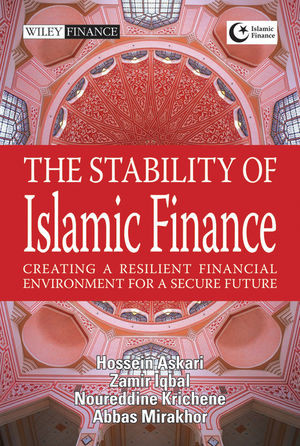

Most ebook files are in PDF format, so you can easily read them using various software such as Foxit Reader or directly on the Google Chrome browser.
Some ebook files are released by publishers in other formats such as .awz, .mobi, .epub, .fb2, etc. You may need to install specific software to read these formats on mobile/PC, such as Calibre.
Please read the tutorial at this link: https://ebookbell.com/faq
We offer FREE conversion to the popular formats you request; however, this may take some time. Therefore, right after payment, please email us, and we will try to provide the service as quickly as possible.
For some exceptional file formats or broken links (if any), please refrain from opening any disputes. Instead, email us first, and we will try to assist within a maximum of 6 hours.
EbookBell Team

0.0
0 reviewsThe book then will present and discuss the architecture of an Islamic financial system and show that at its core, this system shares many characteristics of an stable financial system proposed by Western scholars throughout history to avoid the inherent instability of the present dominant system. Particular emphasis will be placed on the present financial crisis and its causes as well the financial crisis of the 1997 in Southeast Asia, Russia, and Latin America relating these episodes to the fundamental features of the dominant system. The debt crisis of the low income countries will also be part of this discussion. It will then argue that these crises could be mitigated under an Islamic system or any other system with similar architecture.Content:
Chapter 1 The Nature of Capital and the Rate of Return (pages 11–21):
Chapter 2 The Origins of Financial Panics and Recessions (pages 23–35):
Chapter 3 Monetary Policy and Financial Crises (pages 37–44):
Chapter 4 The Internationalization of Financial Crises (pages 45–59):
Chapter 5 The Role of the Credit Multiplier in Financial Crises (pages 61–74):
Chapter 6 The Inherent Stability of Islamic Finance (pages 75–81):
Chapter 7 A Theoretical Model of the Inherent Stability of Islamic Finance (pages 83–92):
Chapter 8 Asset Pricing and Risk in Islamic Finance (pages 93–112):
Chapter 9 Islamic Financial Intermediation and Markets (pages 113–130):
Chapter 10 Risk Profile of Islamic Financial Intermediaries (pages 131–140):
Chapter 11 Financial Engineering, Derivatives and Financial Stability (pages 141–162):
Chapter 12 Corporate Governance and Financial Crises (pages 163–181):
Chapter 13 The Performance of Islamic Financial Intermediaries and Products (pages 183–207):